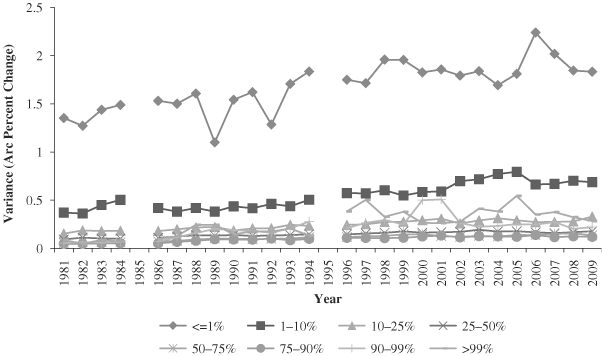So far, in this series of extracts from my book-in-progress, Economic Consequences of the Pandemic, I’ve argued that the inequality of incomes in our society is largely a matter of luck rather than inherent personal ability, and that it is only distantly related to the social value of the contributions people make through their work. These conclusions undercut the idea that taxing those on high incomes will harm society by reducing incentives to work for the most able and social valuable workers. Although the evidence was already strong, the pandemic has brought these points into even brighter relief.
Now I want to consider the claim that we need inequality in order to encourage people to take risks. The simplest response is to point to the empirical fact that high income earners take (or, more accurately, are subject to) less risk than average not more[1].
Hardy and Ziliak (confirmed in general terms by many other sources) give the numbers https://onlinelibrary.wiley.com/doi/full/10.1111/ecin.12044?casa_token=2_dvANjFw2EAAAAA%3AiKxuB6Tn34GJBIOZlN9Hs55w9MxJlkgR0Ns1z-1UAPIosDi2G8Yq3WF9hjUTVy8HQb95t9DwLzCRel8vyg
in any given year since 1996 the level of volatility among the bottom 10% was 81% higher than the volatility among the top 1%, and this level nearly doubled since 1981
Here’s a graph illustrating this point.
